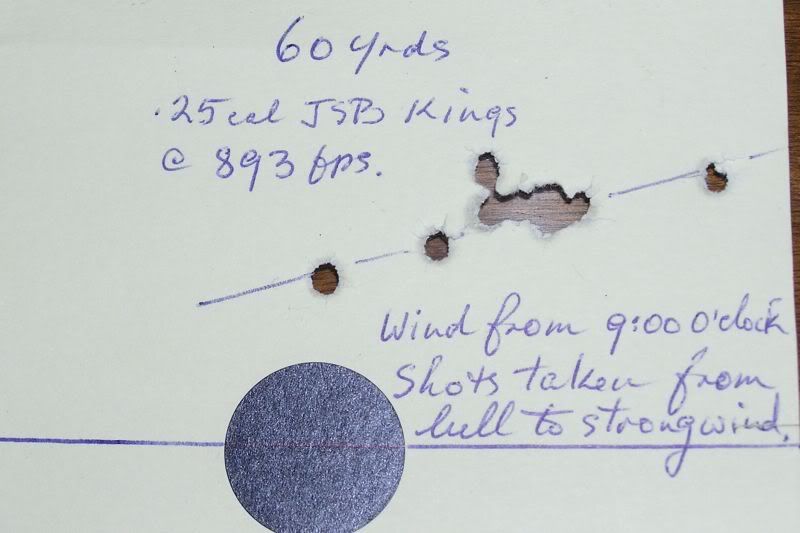"azuaro"...
The BC is a CONSTANT (doesn't change), Bullet Drop is a consequence of velocity of projectile and gravity... and velocity determines Time of Flight...
...
You are shooting at 800 ft./sec to the 12 o'çlock position but there is a HURRICANE level frontal wind coming from this exact same direction at 400 fps (272 MPH) ...Without wind it takes the pellet .2075 seconds to hit the target, so Time of Flight to 50 y = .2075, but with the frontal wind the pellet will exit the gun at 800 fps but will immediately start flying at 400 fps, so the "New" Time of Flight to 50 Y = .4150 seconds.
...
A non related example will be an airplane flying south-north at 500 Knots and having head winds that are 100 Knots....The plane will still be flying at 500 Knots so the INDICATED AIR SPEED inside the cabin of the plane will be 500 Knots but the GROUND SPEED will be 400 MPH...Relating this example to the bullet example above: The bullet speed will be flying at 800 fps. but the GROUND SPEED which is the velocity of the bullet in relation with stationary objects in the ground will be 400 fps...This "Ground Velocity of the Bullet" is what is important.
Appreciate your response, azuaro. Not to nit-pick and get rat holed on trivia, but a few notes to arrive at truth:
1. BC is not a constant (forget wind). It
strongly depends on the speed of the bullet.

2. I am pretty sure adding/subtracting tail/head wind speed to that of the pellet is far from being a good model.
A quick mental experiment:
Say there is a headwind of 30 ft/s, you throw a rock at 30 ft/s straight into that wind - the rock will fly some distance and fall to the ground, right? Obviously, it would fly a bit farther if there was no head wind. If we simply subtracted the velocity of the the wind from the initial velocity of the projectile - that would mean the rock would fall to the ground as soon as it left our hand.
Analogy of the airplane is not applicable to the projectile, because airplane (like a fish swimming upstream) use the medium itself to
push away from. They
develop their speed
relative that medium, therefore if the medium itself moves relative to the ground - the velocity of the airplane or fish relative to the ground is calculated using primary school vector math (e.g. speeds are added or subtracted, etc).
Projectiles are different. They start off with a certain velocity relative to the ground regardless of the medium (air) movement - the only thing that changes when there is head/tail wind component is the force with which air resists that projectile's forward motion. In other words the amount of air resistance changes - aka the
Drag Coefficient, and, as consequence the
BC.

Where:
- BCPhysics = ballistic coefficient as used in physics and engineering
- M = mass
- A = cross-sectional area
- Cd = drag coefficient
- (rho) = average density
- l = body length
Another mental experiment. Say you are shooting somewhere very high in the stratosphere where the density of air is 1/1000th of normal - even if there was a very strong headwind - it would hardly have any impact on the projectile, so wind itself, does not really matter per se - only the resistance it able to create.
Yet another mental experiment. Say you are shooting horizontally at 500 f/s, and there is a perfect tail wind of exactly 500 f/s. What would the speed of the pellet be while its in flight? Certainly not 1000 ft/s. In case of 500fps tail wind - there simply will be no air drag at all, so for all practical purposes the pellet will be traveling in the vacuum and will retain its 500 fps speed relative to the ground throughout the range.
In this case we'd say the Cd = 0 in the above formula, and the BC is infinitely high (aka pellet will not slow down throughout its range)



